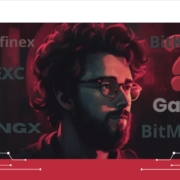Uniswap Market Maker
What is Uniswap?

Uniswap is a decentralized exchange protocol (DEX) built on the Ethereum blockchain that enables peer-to-peer cryptocurrency exchange without the need for intermediaries or a centralized order book. Uniswap uses an automated market-making mechanism where liquidity providers pool their funds to create a market to trade and earn fees based on transactions in the pool.
Check here for details on how we do market making for crypto projects on exchanges like Uniswap
Table of contents
- How are decentralized exchanges such as Uniswap better than centralized ones?
- What are the advantages of listing a token on a decentralized exchange, such as Uniswap, compared to centralized ones?
- Dangers of listing a token on Uniswap
- Do you need a market maker on Uniswap?
- About the team and company behind Uniswap
How are decentralized exchanges such as Uniswap better than centralized ones?
Decentralized exchanges, such as Uniswap, have several significant advantages over centralized ones:
- Decentralized exchanges allow users to trade without trusting a centralized entity with their funds or personal data
- Decentralized exchanges are less prone to single-point-of-failure risks – as no centralized server can be attacked or shut down
- The operations of decentralized exchanges are transparent and auditable, as all transactions are recorded on the public blockchain
- Additionally, centralized exchanges typically do not hold users’ funds, minimizing third-party risk compared to CEX. However, the risk of a hacking attack is still high, plus the possible vulnerability of the smart contract
- Anyone can participate in a decentralized exchange without going through a central authority or meeting certain qualifications.
What are the advantages of listing a token on a decentralized exchange, such as Uniswap, compared to centralized ones?
First of all – you don’t have to choose.You can list your token both here and here. This will bring you to a larger group of investors.
Listing a token on a decentralized exchange such as Uniswap is expected to have several advantages over centralized exchanges such as:
- Listing on Dexes is free. Of course, from an operational point of view, the listing needs to be well prepared and will cost us a lot of work, but the listing process does not involve additional fees. On centralized exchanges, these fees can be significant.
- Listing on Dexes does not involve any additional criteria. The larger the centralized exchange, the more restrictive these criteria can be and relate to formal, regulatory, liquidity, and even technical issues concerning the token and smart contract.
- Another plus is that decentralized exchanges are not controlled by a single company or centralized entity, which in theory, could provide greater security. However, as the events of 2022 convey, they are often an element of risk to investors’ funds and the issuers themselves.
- In theory, liquidity on Uniswap can be provided by many providers, including individuals. However, in practice, this is not always the case and must be taken care of by the project itself or a dedicated market maker.
Dangers of listing a token on Uniswap
Listing on a decentralized exchange such as Uniswap can also have some drawbacks.
- First of all, many smaller projects do not achieve sufficient liquidity on it, both in terms of adequate preparation of liquidity pools and volume.
- Secondly, unfortunately, most individual investors still prefer to use centralized exchanges such as Binance or Coinbase. These exchanges still offer easier exits to fiat and provide several additional features and investment products. The interfaces of decentralized exchanges are still not very user-friendly and do not deter only true crypto-maniacs. Therefore, every project should have a listing on the larger centralized exchanges on its agenda for the time being. For this, too, the support of a good market maker will come in handy.
- Third, any liquidity provider putting assets into pools exposes itself to loss. Contrary to the name impermanent loss, it can be very real, especially when the token price is highly volatile. It is worth trying to at least partially hedge, and this is again the role of an external market maker as a partner to help develop a suitable strategy.
What is concentrated liquidity and how to deal with impermanent loss
Piotr explains the difference between passive and active management of concentrated liquidity on DEX platforms based on examples from the most popular one: Uniswap V3. He demonstrates how to manage token liquidity with efficient use of capital achieving the same results with less burden on token project’s treasury.
Enjoy the video!
Do you need a market maker on Uniswap?
Since Uniswap is a decentralized exchange and has its own automated market making mechanism (AMM) , is it worth engaging an external market maker to provide liquidity?
Indeed, the AMM mechanism provides us with several functionalities that are normally provided by external market markers, for example, the price discovery mechanism and the liquidity pools mechanism. And although it is worth using them and filling the liquidity pools by ourselves with assets of our own token, it is not enough for investors to start trading it.
The pools created must be the right size, as it influences the dynamics of the price of our token. A market maker’s experience will come in handy to determine the optimal size of pools. Besides, our token will probably be traded on several exchanges, and prices on different exchanges may diverge from each other. Such a situation does not build investor confidence. Therefore, it is worth ensuring that prices on different markets behave in a consistent manner. This requires the use of algorithmic trading systems possessed by market makers.
Read also about token price and token supply as tokenomics metrics.
About the team and company behind Uniswap
Uniswap was created by Hayden Adams, a software engineer who developed the protocol in 2018 as part of a hackathon project. The protocol was launched on the Ethereum core network in November 2018.
Uniswap is an open-source project. It is maintained and developed by a community of contributors and developers who work on the protocol in a decentralized manner, and the work is coordinated by a non-profit organization called the Uniswap Foundation. The Foundation was created to support the development and maintenance of the Uniswap protocol. It is run by a team of community-elected board members who oversee the allocation of resources and funds for Uniswap-related projects. In addition to the Foundation, several other entities and individuals have contributed to the development of Uniswap, including developers who have created interfaces and tools to interact with the protocol.
Bottom Line
Thanks for your time! If you found this interesting, share the article on Twitter and show your friends that web3 is a great space.
See you in the next article!
Check here for details on how we build organic liquidity for crypto projects








